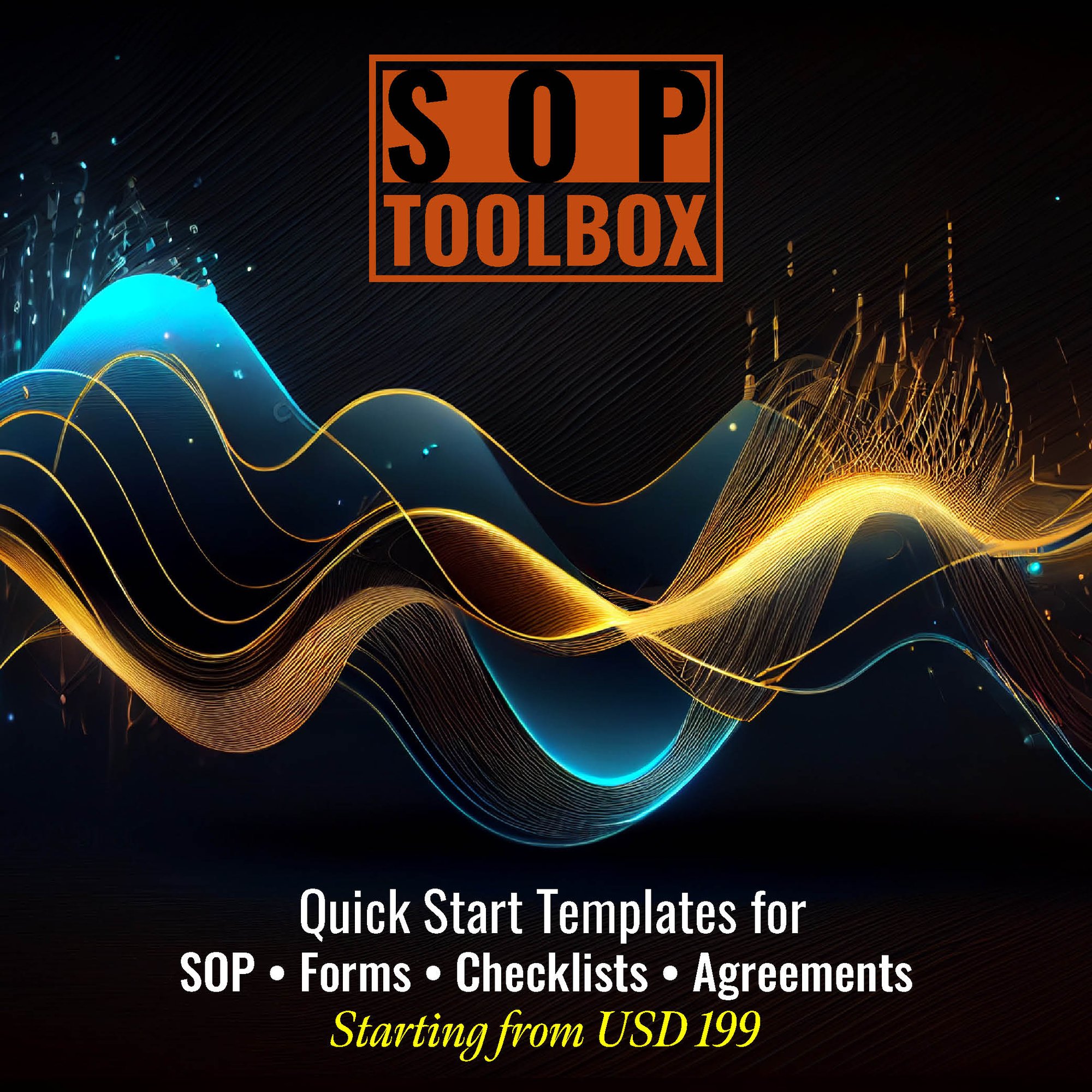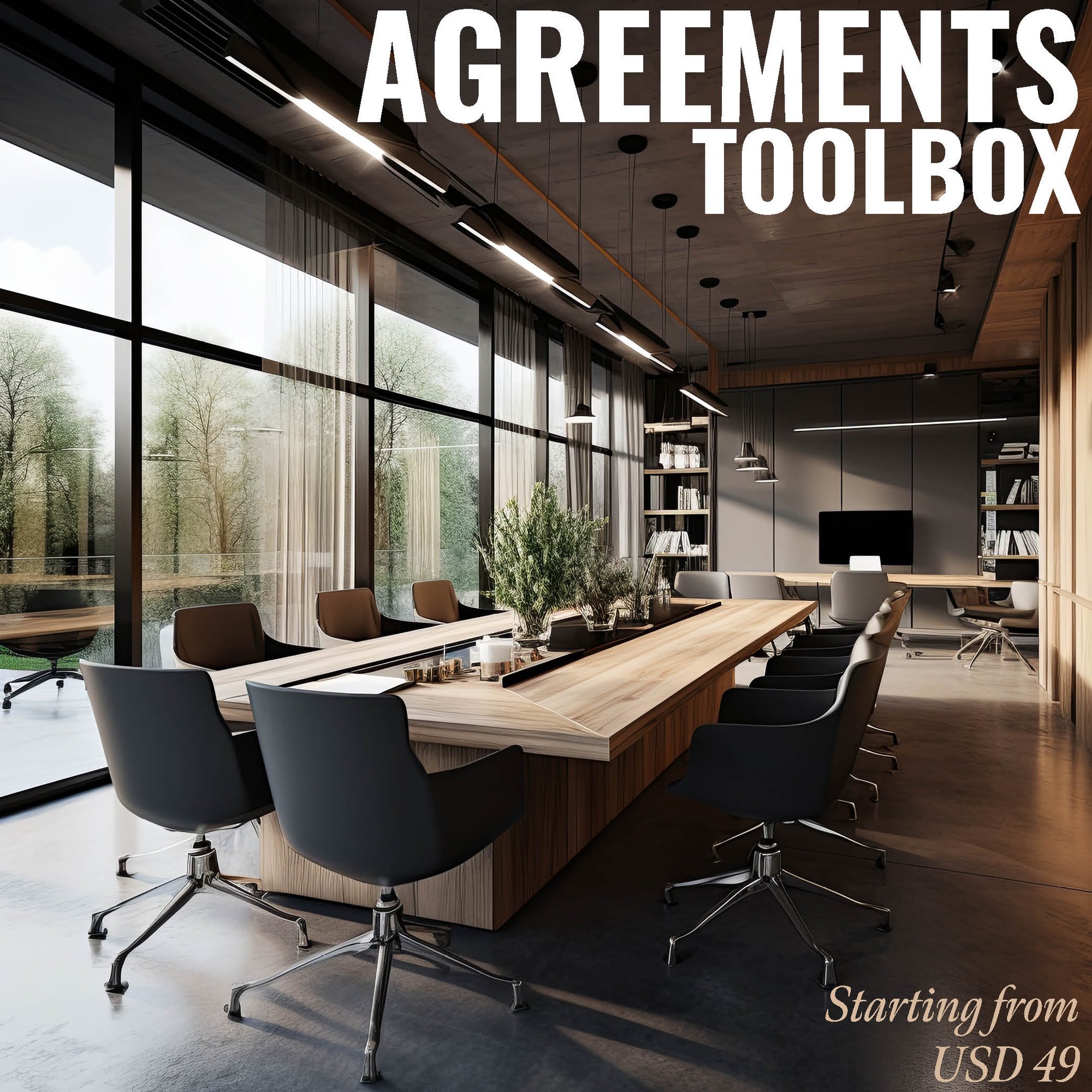An SOP (Standard Operating Procedure) manual for oil and gas pipeline and related structures construction holds a distinct and critical role within the energy industry:
-
Safety and Environmental Protection: Construction in the oil and gas sector involves high-risk operations. The SOP manual prioritizes safety, with guidelines for hazard identification, protective measures, and emergency responses. It also emphasizes environmental protection, ensuring compliance with environmental regulations and reducing the ecological impact of projects.
-
Complexity and Precision: Pipeline and related structures construction requires intricate engineering and precise execution. The manual outlines specialized procedures for welding, integrity testing, and quality control, ensuring that projects meet strict industry standards and specifications.
-
Regulatory Compliance: The energy industry is heavily regulated, and adherence to SOPs is essential for compliance with safety, environmental, and building codes. This helps companies avoid costly legal penalties and disruptions to operations.
-
Risk Management: The manual addresses risk assessment and management, guiding project managers in identifying and mitigating potential issues. This helps prevent accidents, project delays, and cost overruns.
-
Emergency Response: Given the high-stakes nature of the industry, SOPs for emergency response are vital, ensuring that personnel are well-prepared to handle crises, contain leaks, and minimize damage.
-
Resource Optimization: SOPs streamline construction processes, reduce waste, and optimize resource utilization, contributing to project efficiency and cost-effectiveness.
In summary, the distinction of an SOP manual for oil and gas pipeline and related structures construction lies in its focus on safety, environmental protection, regulatory compliance, precision, risk management, emergency response, and operational efficiency within a complex and high-stakes industry. It serves as a critical resource for ensuring project success, safety, and compliance.
CLICK HERE to download the List of SOPs Document in PDF format. Please share this document with your clients, colleagues and senior officers.
Top 50 Standard Operating Procedures (SOPs) for Oil and Gas Pipeline and Related Structures Construction
SOP-972-001: Standard Operating Procedure for Project Planning and Management
SOP-972-002: Standard Operating Procedure for Site Survey and Geotechnical Investigation
SOP-972-003: Standard Operating Procedure for Right-of-Way Acquisition
SOP-972-004: Standard Operating Procedure for Environmental Impact Assessment
SOP-972-005: Standard Operating Procedure for Permitting and Regulatory Compliance
SOP-972-006: Standard Operating Procedure for Pipeline Route Selection
SOP-972-007: Standard Operating Procedure for Clearing and Grubbing
SOP-972-008: Standard Operating Procedure for Trenching and Excavation
SOP-972-009: Standard Operating Procedure for Pipe Stringing and Welding
SOP-972-010: Standard Operating Procedure for Coating and Wrapping Application
SOP-972-011: Standard Operating Procedure for Cathodic Protection Installation
SOP-972-012: Standard Operating Procedure for Boring and Horizontal Directional Drilling
SOP-972-013: Standard Operating Procedure for Hydrostatic Testing
SOP-972-014: Standard Operating Procedure for Tie-In and Hot Tap
SOP-972-015: Standard Operating Procedure for Valve and Station Installation
SOP-972-016: Standard Operating Procedure for Instrumentation and Control Systems
SOP-972-017: Standard Operating Procedure for Commissioning and Start-Up
SOP-972-018: Standard Operating Procedure for As-Built Documentation
SOP-972-019: Standard Operating Procedure for Emergency Response and Spill Control
SOP-972-020: Standard Operating Procedure for Inspection and Quality Assurance
SOP-972-021: Standard Operating Procedure for Welding Inspection
SOP-972-022: Standard Operating Procedure for Non-Destructive Testing
SOP-972-023: Standard Operating Procedure for Coating Inspection
SOP-972-024: Standard Operating Procedure for Cathodic Protection Inspection
SOP-972-025: Standard Operating Procedure for Corrosion Monitoring
SOP-972-026: Standard Operating Procedure for Safety and Health Compliance
SOP-972-027: Standard Operating Procedure for Environmental Compliance
SOP-972-028: Standard Operating Procedure for Traffic Control and Public Safety
SOP-972-029: Standard Operating Procedure for Equipment Operation and Maintenance
SOP-972-030: Standard Operating Procedure for Pipeline Abandonment
SOP-972-031: Standard Operating Procedure for Documentation and Recordkeeping
SOP-972-032: Standard Operating Procedure for Communication and Reporting
SOP-972-033: Standard Operating Procedure for Change Management
SOP-972-034: Standard Operating Procedure for Project Closeout
SOP-972-035: Standard Operating Procedure for Contractor Management
SOP-972-036: Standard Operating Procedure for Material Handling and Storage
SOP-972-037: Standard Operating Procedure for Welder Qualification and Certification
SOP-972-038: Standard Operating Procedure for Pipe Inspection and Testing
SOP-972-039: Standard Operating Procedure for Emergency Shutdown Procedures
SOP-972-040: Standard Operating Procedure for Subcontractor Coordination
SOP-972-042: Standard Operating Procedure for Pipe Transport and Delivery
SOP-972-043: Standard Operating Procedure for Flare System Installation
SOP-972-044: Standard Operating Procedure for Facility Connection
SOP-972-045: Standard Operating Procedure for Pipeline Pigging
SOP-972-046: Standard Operating Procedure for Metering Station Construction
SOP-972-047: Standard Operating Procedure for Regulatory Reporting
SOP-972-048: Standard Operating Procedure for Land Restoration and Reclamation
SOP-972-049: Standard Operating Procedure for Third-Party Inspections
SOP-972-050: Standard Operating Procedure for Remote Monitoring and Control Systems
SOP ToolBox: If you are reading these lines, I am sure you are looking for Standard Operating Procedure guidelines or SOPs itself. In both the cases, searching in internet will not be yielding any great help. Because no company shares their SOP Development Process and certainly don’t share their SOP Documents. The best way to develop an SOP is creating one for yourself. At Fhyzics, we write SOPs day-in and day-out for companies across the globe including some of the Fortune 500 organisations. Our charge ranges from USD 5000 to USD 50000 depending upon the number of processes to be covered. Certainly, this is not affordable to small and mid-size organisations. Hence, we decided to create this SOP ToolBox to disseminate our 8-Step SOP Development Life-Cycle and best practices at an unbelievably low price.
I always say, writing an SOP is somewhere between art and science. So far you may be clueless on where to start and how to progress on an SOP? This will not be the case after you diligently go through this SOP ToolBox. We have summarised all our secrets here to get you started and to deliver a stunning SOP to your management.
Services provided by this industry are
- Compressor, metering and pumping station, gas and oil pipeline, construction
- Construction management, oil and gas pipeline
- Construction management, oil refinery and petrochemical complex
- Corrosion protection, underground pipeline and oil storage tank
- Distribution line, gas and oil, construction
- Gas main construction
- Gathering line, gas and oil field, construction
- Manhole, oil and gas, construction
- Natural gas pipeline construction
- Natural gas processing plant construction
- Oil and gas field distribution line construction
- Oil pipeline construction
- Oil refinery construction
- Petrochemical plant construction
- Petroleum refinery construction
- Pipe lining (except thermal insulating) contractors
- Pipeline construction on oil and gas field gathering lines to point of distribution on a contract basis
- Pipeline rehabilitation contractors
- Pipeline wrapping contractors
- Pipeline, gas and oil, construction
- Pumping station, gas and oil transmission, construction
- Refinery, petroleum, construction
- Service line, gas and oil, construction
- Storage tank, natural gas or oil, tank farm or field, construction
1. Standard Operating Procedures (SOP) Manual for Accounts Department
2. Standard Operating Procedures (SOP) Manual for Finance Department
3. Standard Operating Procedures (SOP) Manual for Customer Service
4. Standard Operating Procedures (SOP) Manual for CRM Department
5. Standard Operating Procedures (SOP) Manual for Credit Department
6. Standard Operating Procedures (SOP) Manual for Treasury Department
7. Standard Operating Procedures (SOP) Manual for Human Resources (HR) Department
8. Standard Operating Procedures (SOP) Manual for Training Department
9. Standard Operating Procedures (SOP) Manual for Learning & Development Department
10. Standard Operating Procedures (SOP) Manual for Administration Department
11. Standard Operating Procedures (SOP) Manual for Front Office
12. Standard Operating Procedures (SOP) Manual for House Keeping
13. Standard Operating Procedures (SOP) Manual for Safety Department
14. Standard Operating Procedures (SOP) Manual for Security Department
15. Standard Operating Procedures (SOP) Manual for Facilities Management Department
16. Standard Operating Procedures (SOP) Manual for Vigilance Department
17. Standard Operating Procedures (SOP) Manual for Legal Department
18. Standard Operating Procedures (SOP) Manual for Information Technology (IT) Department
19. Standard Operating Procedures (SOP) Manual for Sales & Marketing Department
20. Standard Operating Procedures (SOP) Manual for Design & Engineering
21. Standard Operating Procedures (SOP) Manual for Procurement Department
22. Standard Operating Procedures (SOP) Manual for Production
23. Standard Operating Procedures (SOP) Manual for SRM Department
24. Standard Operating Procedures (SOP) Manual for Supply Chain Department
25. Standard Operating Procedures (SOP) Manual for Warehouse
26. Standard Operating Procedures (SOP) Manual for New Product Development Department
27. Standard Operating Procedures (SOP) Manual for Research and Development
28. Standard Operating Procedures (SOP) Manual for Quality Department
29. Standard Operating Procedures (SOP) Manual for Calibration Department
30. Standard Operating Procedures (SOP) Manual for Maintenance Department
From the global energy structure, new energy developed fast. The fossil energy proportion in the global energy consumption structure continued to decline, but the natural oil and gas pipeline industry still grow faster. The amount of oil and gas pipeline projects in the world was about 3.8 thousand, total about 1.96 million kilometers. Of which the natural oil and gas pipeline was about 1.273 million kilometers, at 64.9% of total pipeline mileage. The global pipeline was mainly concentrated in North American, Europe, the Pacific, Russia and Central Asia, which at 43 %, 14%, 14 %, 15 % of total mileage. Since the oil and gas exploration investment decreased, related industries going into a depressed situation. The new oil and gas reserves has declined, and it stopped lots of oil and gas pipeline projects.
The growth rate of China oil and gas market demand become slow, energy resources supply more flexible. Energy pipeline network gradually improved, the new pipeline constructions began to slow down.China released some policies and regulations to create a good market for oil and gas pipeline industry.
-
Chicago Bridge & Iron Company
-
Kbr Inc
-
Mears Group Inc
-
Mammoth Energy Services Inc
-
Henkels & McCoy Group Inc
-
Basic Energy Services LP
-
Strike LLC
-
Npl Construction Co
-
Asrc Energy Services LLC
-
Sunland Construction Inc
Some of the challenges face by this industry are
- Infrastructure Shortfall
One important concept to be aware of is the fact that most new pipelines are being built in areas that are already served by an existing oil and gas infrastructure. However, in most cases, the pipelines that are already in place are either too old or too small to support the actual oil and gas production capabilities of a particular play. This could be because the capacity of the play was once significantly underestimated or because new drilling technologies have created the potential to reach oil and gas that could not have been reached previously.
Whatever the reason, a pipeline project needs to be able to add on to the current infrastructure, building around existing pipelines and replacing them when necessary.
- Right of Way Issues
Another major issue when it comes to pipeline construction is the sheer amount of land they cover. Of course, this can be a problem when it comes to securing the right of way to build the pipeline. Major interstate oil and gas pipelines are usually covered by imminent domain, meaning that it would be impossible for local landowners to stop the pipeline from being built.
However, the main pipeline is only one element of the actual project. Wells and smaller lines that feed into the main line are usually located within a single state and therefore require the builder to secure a right of way agreement with each individual landowner. If you don’t plan ahead appropriately, this can be an extremely costly and time-consuming process.
- Difficult Terrain
Since pipelines typically cover such long distances, there are usually a variety of different terrain challenges that a pipeline construction project must account for. This could include elements like weather (extreme temperatures, rainfall, and major events such as hurricanes and tornados), mountainous terrain (rocky soil that is much more difficult to excavate than ordinary soil), and changes in elevation (difficulty maintaining a steady depth for the pipeline and problems getting equipment to the work site).
Together, all of these issues can cause serious problems for the project that isn’t adequately prepared to deal with them.
- Geopolitical Issues
The typical pipeline construction project crosses many different political jurisdictions, from municipalities to counties to states. This is primarily an area for concern because each of these individual jurisdictions will have its own unique set of building codes and regulations that you must adhere to in order to build there. This dramatically complicates the building process, as failing to account for even one of these disparate sets of regulations can cause serious delays for the entire project.
In order to make sure that geopolitical issues don’t cause problems with your project, it’s important to start early on getting all the approvals you might need and to work with a partner that understands the unique local regulations in a way that you might not.
The best way to address all these issues is with pipeline routing services from a trusted land surveying partner. To learn more about pipeline routing and how it can help you ensure a smooth pipeline construction project, contact Landpoint today.
- World Federation of Pipe Line Industry Associations
https://www.iploca.com/worldfederation - Association of Oil Pipe Lines
https://aopl.org/
Research By : Mohammed Ijas
Keywords: sop, manual, policy, sop meaning, sop full form, standard operating procedure, full sop, user manual, sop is, user guide, instruction manual, owners manual, sample sop, operators manual, sop example,standard operating procedure examples, abbreviation sop, standard operating procedure sample, milk sop, sop document, sop process,m manual, operating procedures, operating process, sop meaning in hindi, standard procedure, sop standard operating procedure, sop top, sop writing, standard operating procedures manual, sop meaning in english, sample sop for mba, standard operating procedures examples in office, product manual, sample sop for ms, maintenance manual, sop security, sop in research, sop in business, whats sop, standard of operation, sop set, sop procedure, sop marketing,sop training, sop hotel, sop, sop meaning business, sop form, sba sop,sop software, help manual, sop it, army sop, company sop, sop sap, o m manual, standard operating procedure examples for small business, shop manual, sop manual, sop meaning in business, purpose of standard operating procedures, sop full meaning, standard operating procedure meaning, sop military, sop standard, sop meaning medical, hr sop, sop production, purpose of sop, sop management, warehouse sop, sales sop, sop pharma, sop manufacturing, sop creation, sop laboratory, ms sop, sop full form in hindi, sop front office, sop customer service, sop online, gmp sop, sop purchasing, sop pharmacy, sop safety, sop for project management,sample sop for australian student visa, sop meaning in tamil, sop system, best sop, sop up, sop in english, sop for mechanical engineering, sop for university,sop in malay, sop lab, sop for business analytics, sop model, sop in pharmacy, developing sops, standard operating procedure examples manufacturing, sop full form in retail,sop full form in medical, sop engineering, sop application, writing standard operating procedures, procurement sop, sop maintenance,standard operating procedure nhs, sop clinical trial, sop operations,sop in construction, operating procedures manual, standard operating procedure ppt, standard procedure meaning, sop ppt, a sop, sop document meaning, sop def, sop full form in safety, sop quality control, sop for college, sop quality, sop service, types of sop, sop for engineering management, sop document sample, benefit of sop, preparing sop, standard operating procedure in hindi, sop for visa, sop compliance, sop protocol, sop aviation, sop meaning in chat, standard operating process, sop meaning military, sop for business management, standard operating procedure software, sop list, sop medical, sop logistics, sop project, sop for it department, sop call center, standard work procedures, sba sop 50 10, sop meaning in logistics, standard operating procedure laboratory, test sop, sop sample for ms, drafting sop, sops meaning in tamil, sops meaning in telugu, sop automotive, standard operating system, sop cafe, sop slideshare, sop ap, sop bank, sop in retail, creating standard operating procedures, sop admin, document control sop, pharmaceutical sop,sop in pharmaceutical industry, statement of purpose harvard, sop examples for ms, quality assurance sop, sop in clinical research, nursing sop, sop for transportation, sop policies, sops are specific to a process, sop in hindi, standard operating procedure for warehouse picking, master sop, list of sop for pharma, pharmaceutical sop examples, types of standard operating procedures, retail sop, sample sop for ms in mechanical engineering, standard operating protocol,sop supply chain, system operating procedure, sop rules, example of sop in research, sop in food industry, sop for international business management, sop for hospitality management, sop for hr department, army sop example, sop standard operating, office sop, hr standard operating procedures, preventive maintenance sop, sop for purchase department, human resources sop, fire department sops, information technology sop, operating procedure example, administration sop,sop for retail store, indian sop, construction management sop, sop hotel front office, example sop document, standard and procedures,working sop, sop for maintenance department, sop hrd department,sop full form in hotel industry, sop full, sop for human resource management, laboratory sop examples, standard operating procedure for quality control, sop for ms in mechanical engineering, sop meaning army, security standard operating procedures, sop machine, sample sop for internship, sop for hotel management, sample sop for masters, qa sop, developing standard operating procedures, standard operating procedure document, product recall sop, marketing statement of purpose, it standard operating procedures, equipment sop, sop purpose example, sop shipping, sop for sales and marketing,converting pos to sop, workshop sop, standard operating procedure manufacturing, digital marketing standard operating procedures, following standard operating procedures, sop ki full form, sop for nursing procedures, an sop, purchase sop for manufacturing company, sop a, statement of purpose for mba marketing, full meaning of sop, sop for research internship, research sop sample,vendor qualification sop, sop purchasing and receiving, sop meaning in visa, sop for admission, standard operating procedure medical office, sop in industry, sop sales marketing, navy sop, project management standard operating procedures, sop it support, standard operating manual, security operating procedures, statement of purpose for international business, procurement standard operating procedures, communication sop, sop full form in pharma, minimum sop, sop health and safety, product sop, sop for marketing department, sop in medical terms, sales standard operating procedure, sop purchase order, department sop, customer service standard operating procedures, clinical sop, marketing standard operating procedure, sop standard operating procedure example, construction standard operating procedures, standard of operations procedures manual sample, sop for facility management, sop full form in education, standard operating procedure in food industry, visa sop,sop for business administration, company sop meaning, sop work, sop operating procedure, sop for summer internship in engineering sample, general administration sop, sop for administrative duties.
Our SOP Templates’ clients are from the following States and Countries:
Alabama, Alaska, Arizona, Arkansas, California, Colorado, Connecticut, Delaware, Florida, Georgia, Hawaii, Idaho, Illinois, Indiana, Iowa, Kansas, Kentucky, Louisiana, Maine, Maryland, Massachusetts, Michigan, Minnesota, Mississippi, Missouri, Montana, Nebraska, Nevada, New Hampshire, New Jersey, New Mexico, New York, North Carolina, North Dakota, Ohio, Oklahoma, Oregon, Pennsylvania, Rhode Island, South Carolina, South Dakota, Tennessee, Texas, Utah, Vermont, Virginia, Washington, West Virginia, Wisconsin, Wyoming.
Afghanistan, Albania, Algeria, Andorra, Angola, Antigua and Barbuda, Argentina, Armenia, Australia, Austria, Azerbaijan, Bahamas, Bahrain, Bangladesh, Barbados, Belarus, Belgium, Belize, Benin, Bhutan, Bolivia, Bosnia and Herzegovina, Botswana, Brazil, Brunei Darussalam, Bulgaria, Burkina Faso, Burundi, Cabo Verde, Cambodia, Cameroon, Canada, Central African Republic, Chad, Chile, China, Colombia, Comoros, Congo (Republic of the), Costa Rica, Croatia, Cuba, Cyprus, Czech Republic (Czechia), Democratic People’s Republic of Korea (North Korea), Democratic Republic of the Congo, Denmark, Djibouti, Dominica, Dominican Republic, Ecuador, Egypt, El Salvador, Equatorial Guinea, Eritrea, Estonia, Eswatini, Ethiopia, Fiji, Finland, France, Gabon, Gambia, Georgia, Germany, Ghana, Greece, Grenada, Guatemala, Guinea, Guinea-Bissau, Guyana, Haiti, Honduras, Hungary, Iceland, India, Indonesia, Iran, Iraq, Ireland, Israel, Italy, Jamaica, Japan, Jordan, Kazakhstan,Kenya, Kiribati, Kuwait, Kyrgyzstan, Lao People’s Democratic Republic (Laos), Latvia, Lebanon, Lesotho, Liberia, Libya, Liechtenstein, Lithuania, Luxembourg, Madagascar, Malawi, Malaysia, Maldives, Mali, Malta, Marshall Islands, Mauritania, Mauritius, Mexico, Micronesia (Federated States of), Moldova, Monaco, Mongolia, Montenegro, Morocco, Mozambique, Myanmar (Burma), Namibia, Nauru, Nepal, Netherlands, New Zealand, Nicaragua, Niger, Nigeria, North Macedonia (formerly Macedonia), Norway, Oman, Pakistan, Palau, Panama, Papua New Guinea, Paraguay, Peru, Philippines, Poland, Portugal, Qatar, Republic of Korea (South Korea), Republic of the Congo, Romania, Russian Federation (Russia), Rwanda, Saint Kitts and Nevis, Saint Lucia, Saint Vincent and the Grenadines, Samoa, San Marino, Sao Tome and Principe, Saudi Arabia, Senegal, Serbia, Seychelles, Sierra Leone, Singapore, Slovakia, Slovenia, Solomon Islands, Somalia, South Africa, South Sudan, Spain, Sri Lanka, Sudan, Suriname, Sweden, Switzerland, Syrian Arab Republic (Syria), Tajikistan, Thailand, Timor-Leste, Togo, Tonga, Trinidad and Tobago, Tunisia, Turkey, Turkmenistan, Tuvalu, Uganda, Ukraine, United Arab Emirates, United Kingdom of Great Britain and Northern Ireland, United Republic of Tanzania, United States of America, Uruguay, Uzbekistan, Vanuatu, Venezuela, Viet Nam, Yemen, Zambia, Zimbabwe.
Fhyzics supports organisations in developing the following documentations:
Standard Operating Procedures (SOPs), Work Instructions, Policies and Procedures, Process Flow Diagrams, Job Descriptions, Training Manuals, Employee Handbooks, Compliance Guidelines, Quality Assurance Manuals, Health and Safety Procedures, Risk Management Plans, Business Continuity Plans, Internal Audit Procedures, Incident Reporting Forms, Performance Management Guidelines, Change Management Procedures, Vendor Management Guidelines, Customer Service Protocols, IT Security Policies, IT Support Documentation, Disaster Recovery Plans, Operational Checklists, Data Management Policies, Confidentiality Agreements, Non-Disclosure Agreements, Employee Onboarding Procedures, Employee Exit Procedures, Performance Appraisal Forms, Employee Code of Conduct, Conflict Resolution Procedures, Product Development SOPs, Supply Chain Management Guidelines, Procurement Guidelines, Inventory Management SOPs, Shipping and Receiving Procedures, Production Scheduling SOPs, Maintenance Procedures, Equipment Calibration Documents, Environmental Compliance Documentation, Sustainability Policies, Customer Feedback Forms, Marketing Strategies, Advertising Guidelines, Brand Management Guidelines, Product Packaging SOPs, Laboratory Testing Procedures, Regulatory Compliance Documentation, Tax and Accounting Procedures, Contract Management Procedures, Legal Compliance Guidelines, Financial Reporting Procedures, Budgeting Procedures, Internal Control Procedures, Fraud Prevention Policies, Asset Management Guidelines, Purchase Order Procedures, Sales and Distribution Guidelines, Client Contracts, Customer Return Policies, Internal Communication Protocols, Vendor Evaluation Forms, Product Safety Standards, Workplace Health and Safety Standards, Public Relations Procedures, Social Media Management Guidelines, Crisis Management Plans, Employee Grievance Procedures, Privacy and Data Protection Policies, Digital Transformation Guidelines, Innovation Management Procedures, Continuous Improvement Guidelines, Strategic Planning Documents, Corporate Social Responsibility (CSR) Guidelines, Audit Trails and Records, Employee Training and Development Records, Succession Planning Documents, Talent Acquisition Procedures, Team Collaboration Protocols, Employee Benefit Plans, Workplace Diversity Guidelines, Time and Attendance Tracking, Payroll Procedures, Employee Leave Policies, Conflict of Interest Policy, Emergency Response Procedures, Environmental Impact Assessment Procedures, Transportation and Logistics Procedures, Inventory Control Forms, Warehouse Management Guidelines, Product Lifecycle Management SOPs, Customer Satisfaction Surveys, Third-Party Risk Assessment Guidelines, Technology Adoption Policies, Software Licensing Guidelines, Security Incident Response Procedures, Supply Chain Risk Management Policies, Product Recall Procedures, Food Safety Guidelines, Employee Wellness Programs, Workplace Ergonomics Guidelines.






.jpg?width=645&height=337&name=Standard%20Operating%20Procedure%20-%20SOP%20ToolBox%20(1).jpg)











